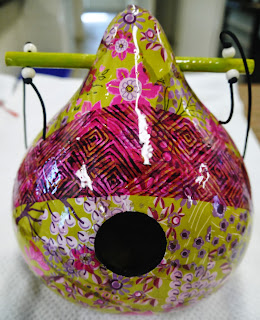By Erika Zambello
As we continue into the 21st century, we are looking for ways to be healthier, happier and more environmentally friendly. Gardening can tackle all three, and Duke Gardens can teach you how to create a sustainable landscape in its five part series, “Landscapes for Life: A Homeowners Guide to Sustainable Gardening.”
As we continue into the 21st century, we are looking for ways to be healthier, happier and more environmentally friendly. Gardening can tackle all three, and Duke Gardens can teach you how to create a sustainable landscape in its five part series, “Landscapes for Life: A Homeowners Guide to Sustainable Gardening.”
The course is
based on a program developed by the U.S. Botanic Garden and the Lady Bird Johnson Wildflower Center to teach gardening techniques that work with natural ecosystems to promote
healthy local environments.
Whether your
garden is a small plot or pot outside an apartment, or a suburban lawn or huge farm,
a few simple steps can ensure that your garden is both beautiful and
sustainable.
Soils in
conventional gardens can be over-compacted. To create a sustainable landscape,
add a thick layer of compost to the top of planting beds. The compost will
allow earthworms and other decomposers to naturally blend the compost into the
soil below, loosening the compacted soil and improving its capacity to store
water. To prevent soil compaction in the future, plant vegetation or lay mulch
over bare soil, stick to pre-determined paths or trails to avoid tamping down
the soil, and try not to do too much garden work when the soil is wet.
Storm water
and rainwater should not be treated as wastewater, as excessive runoff causes
water pollution problems. Instead, rainwater should be strategically captured
and allocated to irrigation purposes via rain gardens. These gardens absorb excess
rainwater, prevent runoff from polluting streams or lakes, clean the water as
it filters through the soil, and restore local groundwater levels.
To create a
rain garden, find the drainage area in your landscape, dig the garden to a
depth of 6 to 12 inches, depending on your soil type, and then plant vegetation
that thrives in the expected moisture levels. Plants that can grow in very wet
conditions should be planted in the deepest part of the rain garden, and plants
that prefer dry conditions at the edges.
Sustainable
landscapes cleanse the air and water, inspire physical exercise that promotes
your health, and provide produce without harmful pesticide residues present on
many non-organic vegetables and fruits found in grocery stores. To fulfill the
health-benefit potential of your garden, refrain from using synthetic
pesticides, design areas for exercise and activities, and avoid using too many
electrical light fixtures that waste electricity and contribute to light
pollution.
Residential
properties are now the primary source of pollution in this country. By creating
and maintaining sustainable landscapes, you can do your part toward creating a healthy
world for you and your community.
There are so
many more methods to create a sustainable landscape in your own back yard, and Duke
Gardens’ “Landscapes for Life” series is the perfect way to learn new skills
and improve your garden this spring. The course will be held on Wednesdays from
Jan. 15 to Feb. 12, 2014, from 6:30 to 9 p.m. at the Doris Duke Center. For
more information or to register, call (919) 668-1707 or visit us at gardens.duke.edu.
Sarah P. Duke Gardens creates and nurtures an environment in the heart of Duke University for learning, inspiration and enjoyment through excellence in horticulture. The Gardens receives roughly half of its operating budget from Duke University. The rest comes from people like you, who value all that this public botanic garden has to offer. Duke Gardens is at 420 Anderson St.
Columnist Erika Zambello is a graduate student studying Ecosystem Science and Conservation at Duke University’s Nicholas School of the Environment. This column first appeared in the Durham Herald-Sun.
Sarah P. Duke Gardens creates and nurtures an environment in the heart of Duke University for learning, inspiration and enjoyment through excellence in horticulture. The Gardens receives roughly half of its operating budget from Duke University. The rest comes from people like you, who value all that this public botanic garden has to offer. Duke Gardens is at 420 Anderson St.
Columnist Erika Zambello is a graduate student studying Ecosystem Science and Conservation at Duke University’s Nicholas School of the Environment. This column first appeared in the Durham Herald-Sun.











































